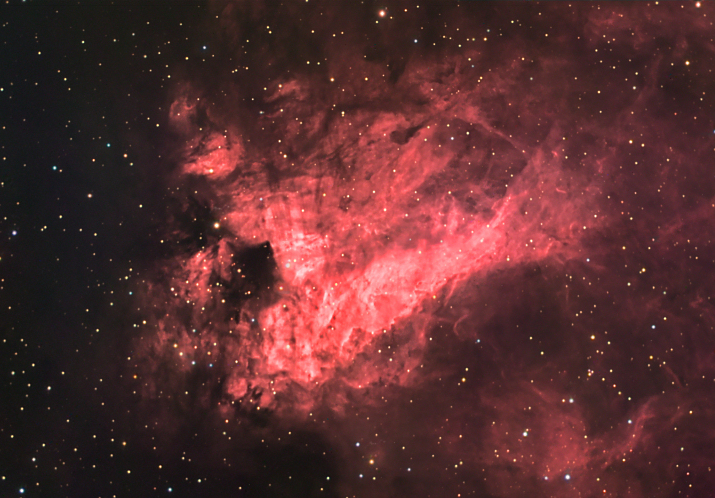
|
Date: June 17 & 18, 2005 - Location: Margate, FL Telescope: C14 F:6.73 Camera: ST-10XME/AO7 Filters: Astrodon TruBalance Exposure: L = R = 80 min. R G & B = 30 min. each Click on the image below to view at higher resolution. |

|
M17, also called the Swan Nebula and sometimes the Omega Nebula, is a region of star formation and shines by excited emission caused by the high-energy radiation of young stars. Unlike many other emission nebula, however, these stars are not obvious in optical images, but are hidden in the nebula. Star formation is either still active in this nebula, or has ceased very recently. A small cluster of about 35 bright but obscured stars seems to be imbedded in the nebulosity. The color of the nebula is reddish, with some graduation to pink. This color comes from hot hydrogen gas excited to shine by stars lying within the nebula. The brightest region, however, is actually of white color, not overexposed as one might think. This phenomenon is apparently a result of a mixture of emission light from the hottest gas, together with reflections of the bright star light from the dust in this region. The nebula contains a large amount of dark obscuring material, which is obvious in its remarkable features. The mass of the gas in the nebula is estimated to be about 800 times that of the Sun. While the bright nebula seems to be roughly 15 light years across, the total gaseous cloud, including low-luminosity material, extends to at least 40 light years. M17 is estimated to be 5,000 to 6,000 light years distant. 1http://www.seds.org/messier/m/m017.html
|